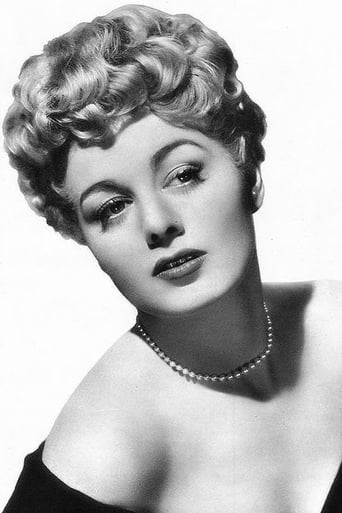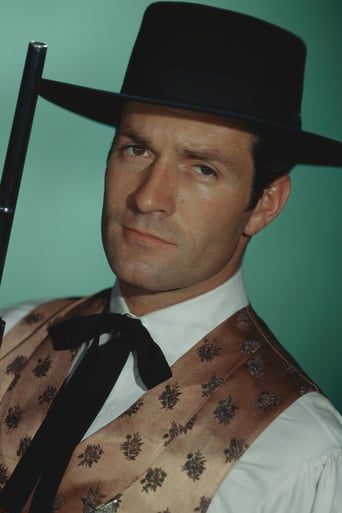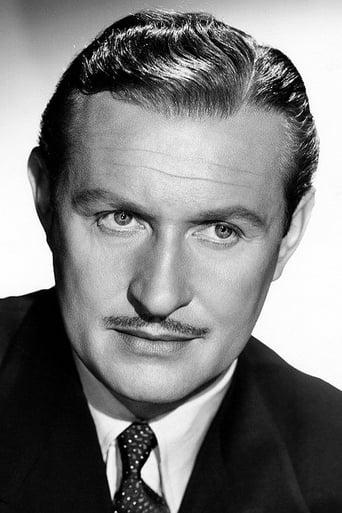Tockinit
not horrible nor great
ScoobyWell
Great visuals, story delivers no surprises
Murphy Howard
I enjoyed watching this film and would recommend other to give it a try , (as I am) but this movie, although enjoyable to watch due to the better than average acting fails to add anything new to its storyline that is all too familiar to these types of movies.
Bob
This is one of the best movies I’ve seen in a very long time. You have to go and see this on the big screen.
MartinHafer
Despite the title, this was filmed in Alberta, not Saskatchewan. It didn't bother me, as it was a beautiful film to watch--it was so vivid and blue. However, I wonder if Canadians might notice that it's not Saskatchewan.The idea of a film about the Mounties and the natives isn't a bad one. However, at times, it felt almost as if this was another 'cowboys versus Indians' films--though its message that there are both good and bad Indians and brotherhood was a nice change of pace. Too bad this was lost, somewhat, because of a dopey side story about a woman wanted in the States (Shelly Winters).The film begins with a very unlikely pair of brothers (Alan Ladd and Jay Silverheels) having a shooting contest. You learn that they were raised together and Ladd has a strong affinity for the natives. However, his new commanding officer in the Mounties is a total idiot--and his ways do nothing but alienate the friendly natives--pushing them towards an alliance with the warlike Sioux. So, it's up to Ladd to come to the rescue! There is a bad side story involving Shelly Winters. Her characters is just annoying. No one seems too upset that she steals a horse and behaves like a spoiled brat--and you know that no matter how awful she is, she'll be in a clinch with Ladd by the end of the film. Frankly, her character was 100% unnecessary.Overall, a very flawed but pretty film that fans of Ladd will enjoy--but others would probably be unimpressed by when they watch. Watchable.
weezeralfalfa
This is one of the spin off films inspired by the 'Custer's Last Stand' saga, that so traumatized the American psyche of the times.The saga of the actual Battle of the Little Bighorn has, of course, been played out on film as a drama or documentary a number of times.In fact, Raoul Walsh, who directed the present film, also directed the classic Errol Flynn-Olivia de Haviland-starring 'They Died with their Boots On' version of this battle. In fact, we might think of the present film as a long-delayed fictionalized sequel to that film, as it deals with the post-Little Bighorn Sioux movement into adjacent Canada and their interactions with the resident Cree. On the other hand, the plot much more resembles 2 other spin offs of the late '40s and early '50s I am familiar with:John ford's 'Fort Apache'and Anthony Mann's 'The Last Frontier'. These 2 films generally get higher ratings than the present film, although 'The Last Frontier' is probably no better known today. That film dealt with the US army's conflicts with the Sioux headed by Red Cloud in a slightly earlier era, just as the Civil War was drawing to a close, and is based on a historical conflict. In 'Forte Apache', the Sioux are replaced by the Apache. In all 3 films, at some point, there is a strong conflict between an 'injin'-savvy subordinate and the company commander who is either naive in dealing with 'injins' or feels duty-bound to deal with them as he believes his distant superiors wish. In the end, the rebel is vindicated. To one who has seen all 3 of these films, clearly 'Fort Apache' is the most entertaining, because of the charisma of the main adversaries(John Wayne and Henry Fonda) and the periodically interjected humor of some of the supporting actors. In contrast, the other 2 films lack any substantial humor to break up the drama, save for Victor Mature's taunting of Robert Preston, who has fallen into a bear trap pit. In 'The Last Frontier', Mature certainly provides a more animated charismatic rebel than the rather stiff monotonic Alan Ladd in the present film. This is the third film of this era I have seen , in which Shelly Winters is the lone white female among a horde of men traveling through a hostile 'injin'-infested West. Usually, she comes across as a hard-bitten floozy, sporting a low-cut dress, although she seems a tad more respectable in the present film.The gorgeous Canadian Rockies scenery is certainly one of the pluses for this film even though, geographically, it has no business being on the route from Saskatchewan to Great Falls, Montana.It was amusing seeing Alan Ladd in his cardinal red RCMP uniform sneaking up on the Cree encampment in broad daylight, in contrast to a much more appropriate drab buckskin outfit of his French Canadian scout. It was difficult for me to tell the Cree from the Sioux by their dress, horse riding and lodges. The Cree were a very diverse and widespread group. The Plains Cree, by necessity, adopted much the same lifestyle as the Plains Sioux, riding horses and living in bison-derived tepees, as opposed to the Woodland Cree, who made wigwams and canoes out of birch bark. By staging most of this film in the Rockies, both the horsemen and canoeing aspects of Cree transport were included. Jay Silverheels, who achieved fame as The Lone Ranger's constant companion in the TV series, again serves as a sometimes companion and confident to the hero. Hugh O'Brian plays a very conflicted character: a US marshal out to capture Shelly's character for the supposed murder of her brother, but who also has the hots for Shelly, to his ultimate demise.
dbdumonteil
The score is based on the French old folk song "A La Claire Fontaine " (17th century )whose writer remains unknown to this day.It crossed the Atlantic and became popular in Quebec ,notably among the Coureurs De Bois ;so its use in this northern western makes sense.There are two plots :one concerns the fight against the Sioux ,with a little help from the Crees -one of the Cree Indians considers O'Rourke (Ladd),the hero ,not his friend but his brother;the other deals with a marshal (O'Brian) who's got to bring back a woman (Winters)(who might or might not have killed a man).And that the man in question was the policeman's brother only makes matters worse.There are good leads (Shelley Winters was an actress who could play anything and she is ideally cast as this tough woman),splendid landscapes (the scene of the rainbow or the misty banks of the lake ) ,a bit of humor (the squaw and her children ,and the final nod to France)and some emotion (the wounded soldier).It is no one of Walsh's most memorable works ,but it's quite pleasant.
sostitanic26
Who ever wrote this scipt apparenly was never in The Canadian West. I live in Manitoba and have traveled many times to the West Coast I have never yet seen a mountain in Saskatchewan. We never had any sort of trouble with the Sioux when they came into Canada and certanly no N.W.W.P. constable would allow a Canadian never mind an American shoot an indian in the back. And the Costumes terrible, the Mounties wore Pill Box Hats I think untill about 1919 when they became the R.C.M.P.And th music is the march past of the royal 22 regement Vive la Canadienne and certanly would not have been known out west.All in all a lousey movie about the Canadian west, very little truth.




